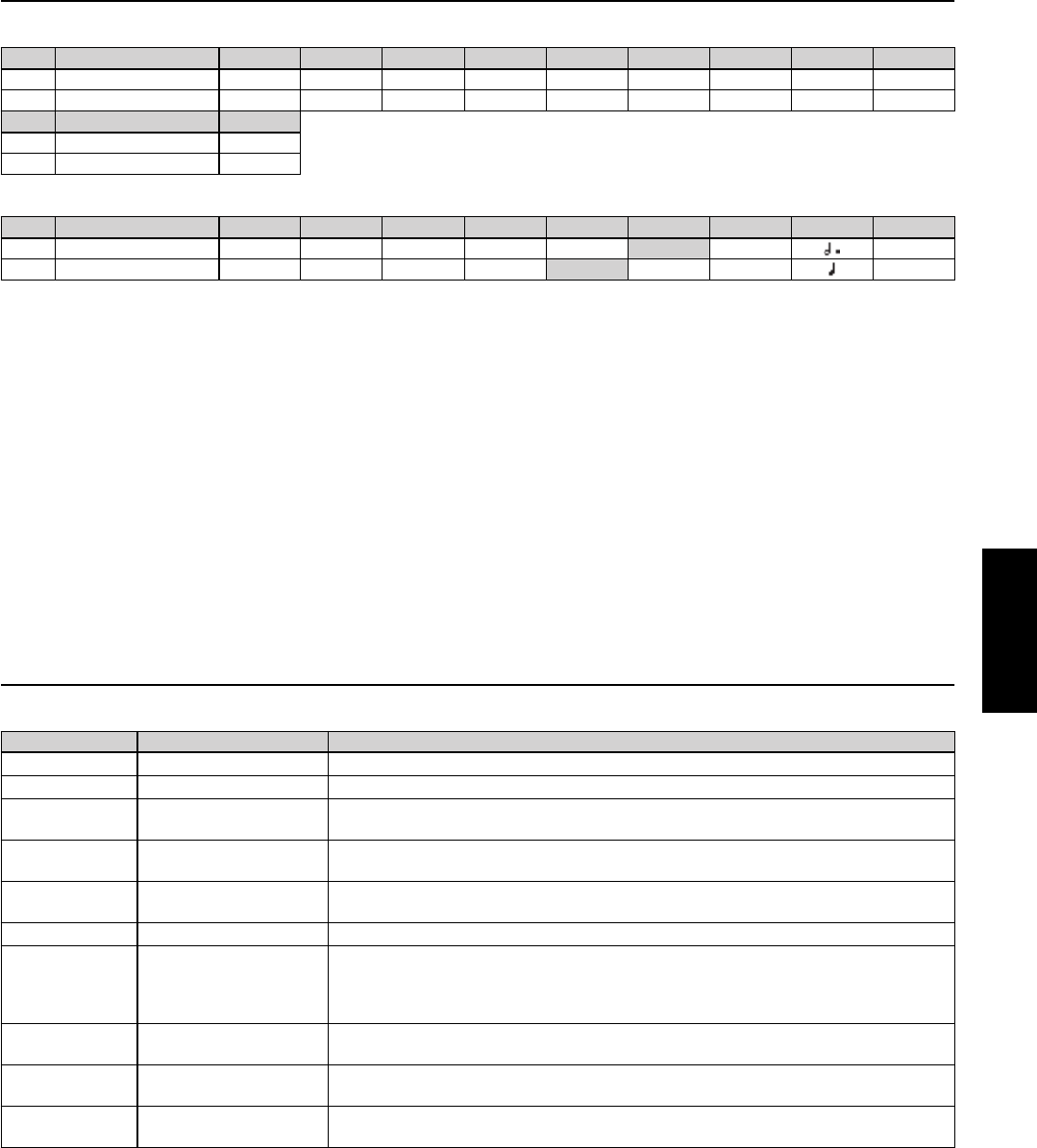
SPX2000—Owner’s Manual 69
Composite
Effect list
■Basic parameters
■Fine parameters
Reverb + Flanger (PRESET bank)
Reverb → Flanger (PRESET bank)
Reverb + Flanger separately applies reverb and flanger to the original sound, and then mixes the results.
Reverb -> Flanger applies reverb to the original sound and then applies flanger.
Each aspect of the sound is controlled by the following effect parameters.
Reverb: REV TIME, HI.RATIO, INI.DLY, DIFF., DENSITY
Flanger: FREQ., DEPTH, MOD.DLY, FB GAIN, WAVE
Balance of reverb and flanger: REV/FLG, REV.FLG
Filter/equalizer: HPF, LPF
Tempo synchronization: SYNC, NOTE, TEMPO
Output level: OUT LVL, MIX BAL.
Parameter details
■Basic parameters
No. Effect name FREQ. AM DEPTH PM DEPTH MOD.DLY WAVE REV TIME HI.RATIO INI.DLY DIFF.
64 CHORUS & REVERB 0.65 Hz 30% 58% 5.2 ms Sine 2.4 s 0.1 10.0 ms 9
86 REV->CHORUS 2.00 Hz 74% 18% 17.0 ms Tri 2.1 s 0.4 17.0 ms 7
No. Effect name DENSITY
64 CHORUS & REVERB 100%
86 REV->CHORUS 100%
No. Effect name MIX BAL. OUT LVL HPF LPF REV/CHO REV.BAL SYNC NOTE TEMPO
64 CHORUS & REVERB 100% 100% Thru 10.0 kHz 78%
OFF —
86 REV->CHORUS 100% 100% Thru 8.00 kHz
65% OFF —
Parameter name Range Explanation
FREQ. 0.05—40.00 Hz
Speed of modulation. Increasing this value will make the modulation repeat at a shorter interval.
DEPTH 0—100%
Modulation depth. Increasing this value will produce deeper modulation.
MOD.DLY 0.0—500.0 ms
Delay of the effect sound relative to the original sound. The delay time will be modulated around
this value. FREQ. sets the speed of this change, and DEPTH sets the depth.
FB.GAIN –99%—+99%
Amount of feedback for the effect sound. Raising this value will increase the amount of feedback,
emphasizing the modulation. Negative (–) settings will invert the phase of the feedback.
WAVE Sine, Tri
Waveform of the modulation signal. This will affect the character of the modulation.
You can choose Sine (sine wave) or Tri (triangle wave).
REV TIME 0.3—99.0 s
Reverb time. This is expressed as the time over which reverberation at 1 kHz will decay by 60 dB.
HI.RATIO 0.1—1.0
Reverb time for the high-frequency range, expressed as a proportion of REV TIME. If this value is
0.1 the time will be 1/10th the REV TIME; if it is 1.0 the time will be the same as the REV TIME.
You can adjust these values to simulate the absorptiveness of the walls or ceiling. HI.RATIO is the
decay of the high-frequency range.
INI.DLY 0.0—500.0 ms
Delay of the early reflections relative to the original sound. This also affects the delay until the
reverberation is heard.
DIFF. 0—10
Diffusion of the sound to left and right. Increasing this value will make the reverberation more
spaciousness.
DENSITY 0—100%
Density of the reverberation. Increasing this value will make the reverberation smoother. You can
create unique effects by lowering this value.


















